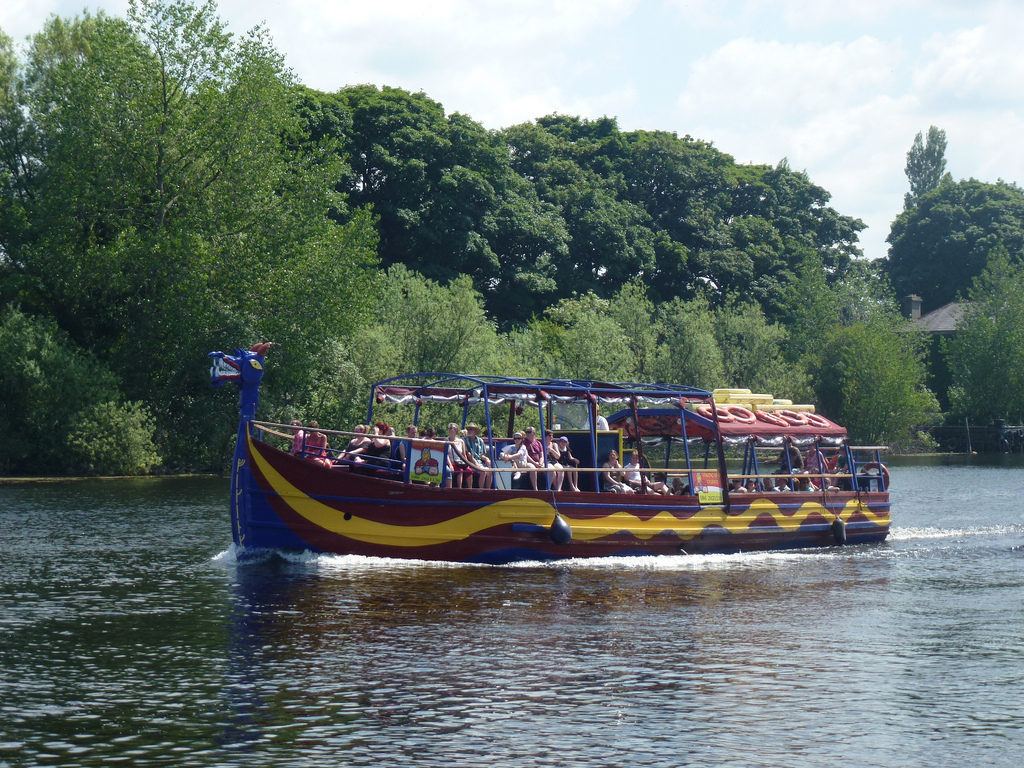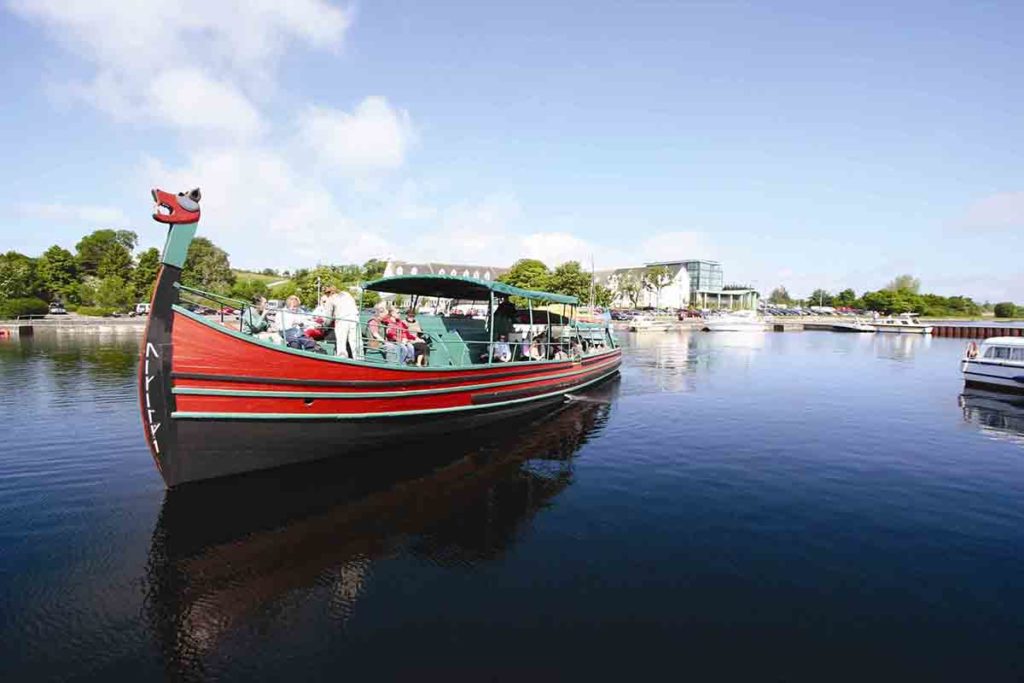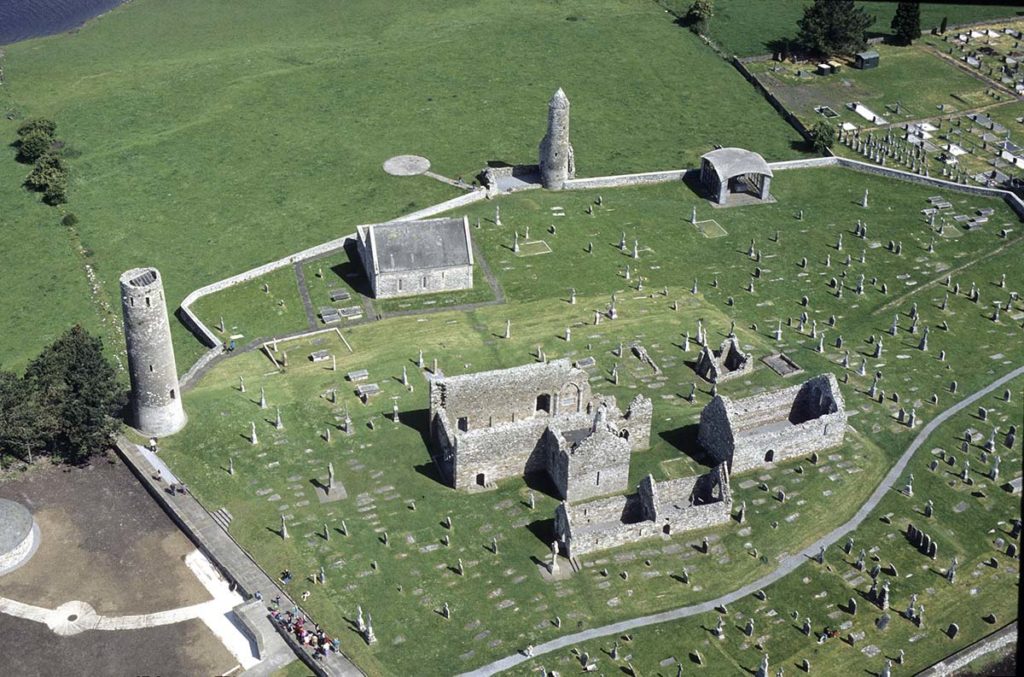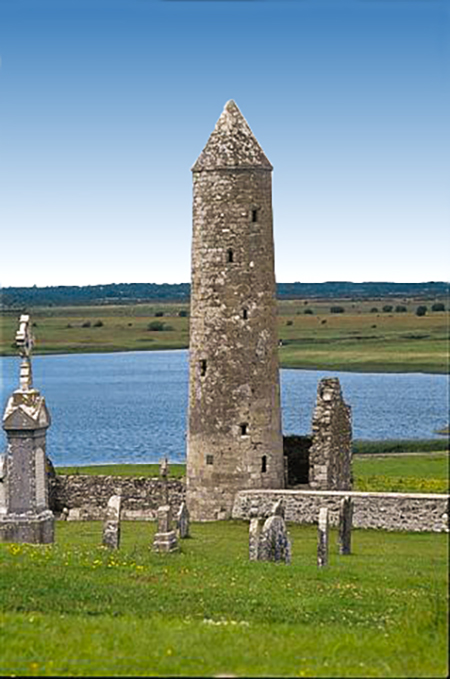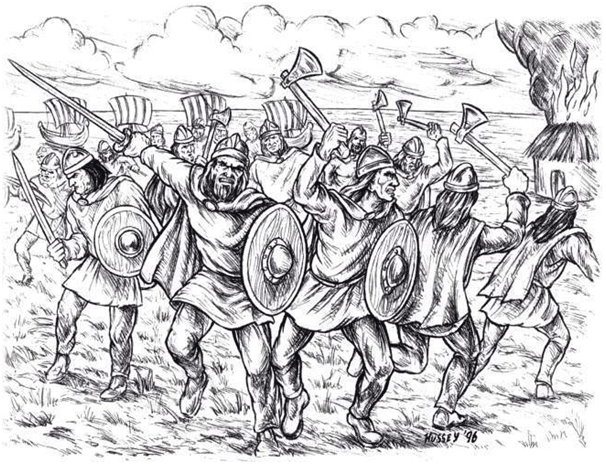If you are staying at Hodson Bay Hotel and are looking for a fun activity, we would recommend checking out the longest viking ship in Ireland and the UK. Step on board Viking Knarr, a 21-metre long replica Viking ship and navigate the once treacherous waters of the Shannon. Spark your imagination with tales of the High Kings of Ireland, Viking battles and pillaging, and the saintly scholars of Clonmacnoise with Viking Mike.
Sail north on the deep dark waters of Lough Ree
Sail north with Viking Mike on the Lough Ree, the Lake of the Kings to discover interesting historical facts about Lough Ree to arrive at the historical centre of Ireland at Hodson Bay Hotel.
“Viking Bases in the 830 and 840s were at: Indber Dee (Arklow or Wicklow), Lough Neagh, Annagassan, Dublin, Narrow Water and Strangford Lough, Co. Down, Lough Ree on the Shannon, and at Cork and Limerick. Many of these early Viking bases were likely to have been situated in monasteries. Others may have been in existing ring forts. The Vikings were opportunists and would have used whatever site was locally useful.”Updated March 2001 by the Viking Network IRISH CO-ORDINATOR Michal Farry
“A fleet was based on Lough Ree and the Shannon and built a fortified position on the shores of Lough Ree from where they ravaged the surrounding countryside in 844. Máel Seachnaill, overking of the Uí Néill attacked the Vikings, captured a leader called Turgesius and drowned him in Lough Owel in Westmeath.” Updated March 2001 by the Viking Network IRISH CO-ORDINATOR Michal Farry
Myths & Legends
Some think Turgeis was not as evil as the recalled in parts of history. Some say Irish writers exaggerated his misdeeds to highlight Máel Seachnaill’s achievement in ridding Ireland of numerous such invaders.
One story says that Máel Seachnaill challenged Turgeis to single combat on the shores of Lough Owel and won. He not only drowned Turgeis in the waters of the lake but also took his collar of gold.
Another version says Turgeis developed a passion for Máel daughter. One day Máel said he would send fifteen girls with his daughter and asked Turgeis to choose one these and spare his daughter. Instead, he sent fifteen young men disguised as girls. They were all soldiers and captured Turgeis. Máel kept the Viking for a few days and made him suffer. Then he threw him, tied in chains, into Lough Owel.
Sail on the silver waters of the River Shannon
Sail south on the waters of the River Shannon to the historic monastery, Clonmacnoise (Meadow of the Sons of Nós), County Offaly. GPS Co-ordinates: 53.32536856o N, 7.98703372o W
Vikings and Anglo-Normans pillaged on numerous occasions Irish monastic sites. Saint Ciarán, the first abbot of Clonmacnoise founded the monastery in c548. During 900 – 1200 the buildings were wooden but did not survive time. From the 10th Century onwards they used stone to build. From the 13th Century, Clonmacnoise fell into ruin. The English Garrison destroyed the monastery in 152. Today, the site includes ruins of Seven Churches, a Cathedral, two Round Towers, three High Crosses and a large collection of grave slabs dating back Early Christian times.
Centre of Religion and Learning
Clonmacnoise is visited by scholars from all over Europe due to its status as a centre for religion and learning. The location created connections with the Kings of Connacht and allied with the Kings of Meath. Because of these connections, many High Kings of Tara and Connacht were buried there, including the last High King of Ireland, Rory O’Connor in 1198.
Brian Boru (Bryan Boru)
Brian Boru had a close association with Clonmacnoise. He grew up with his Clan in Killaloe, County Clare. When the Vikings arrived in Ireland; they pillaged his home and killed many of his kin including his mother, who was ‘the heart of his world’. The young Brian was sent to the Clonmacnoise for the safety and education provided by the monks. Brian was an avid reader. He learnt strategies on warfare from great military leaders. He later used this knowledge on the battlefield. After years in Clonmacnoise, he returned home and led numerous battles against the Vikings.
Basic Timeline of Viking Presence in Ireland
700 Around this time there was a gradual transition from tribalism to dynastic politics, resulting in 500 years of inter-kingdom battles and inter-monastery battles.
709 Plague, believed to have been polio, also dysentery
772 Twelve years of famine and plague, Bloody flux, smallpox, rabies and cattle murrain
773 Drought and famine
777 Bad summer – wind and rain
795 First Viking raids on Ireland
799 Inter-kingdom battles, too numerous to mention, took place during this century
807 Large Viking raid on western coast
837 Vikings carry out intensive raids on Ireland and set up bases
841 Viking establish base in Dublin
848 Norse occupies Cork
876 Relative respite from Viking raids for next forty years
892 Great wind, forests destroyed and wooden churches and houses blown away
899 More inter-kingdom battles, too numerous to mention, took place during this century
900 English coins begin to circulate in Ireland
902 Dublin evacuated by the Norse
914 Large Viking fleet arrives in Waterford
917 Vikings establish the proper town of Dublin
920 – 950 Dublin Kings strike coins at York in England
922 Foundation of the Norse town of Limerick
951 Outbreak of Smallpox and bloody flux among the Norse in Dublin
965 Famine
978 Battle of Belach Lechta – in Ballyhoura Mountains in North Cork. Brian Boruma mac Cennetig (Brian Boru) defeats and kills Mael Muad mac Brain and becomes king of Munster.
980 Battle of Tara – defeat of Olaf Curran, King of Dublin, by Malachi of the O’Neill tribe.
999 Battle of Glenn Mama near Dublin, Mael Morda, king of Leinster, and Sitric Silkbeard king of Dublin defeated by Brian Boru. Other inter-kingdom battles, too numerous to mention, took place during this century.
1000 Brian Boru captures Dublin
1002 Reign of Brian Boru as High King commences twelve years of reasonable peace apart from odd outbreaks of inter dynasty fights in Ulster.
1014 Mael Morda, king of Leinster, invites Jarl Sigurd of Orkney to help him fight Brian Boru. In the Battle of Clontarf on Good Friday, Apr 23th. Both are defeated and killed.
Brian Boru is killed after the battle. Inter-kingdom feuds and battles recommence.
1047 Famine in Ulster causing a lot of people to settle in Leinster
1062 Colic in Leinster spreads to rest of country
1066 Battle of Hastings, Norman’s conquer England
So, All Abroad for Viking Mike’s Longboat
Enjoy a fantastic family day out and learn about the history, myths and legends of Lough Ree, the River Shannon, Clonmacnoise and the Vikings. Viking Mike narrates amazing stories that capture the imagination and recreate stories in your mind. So, forget the TV, video games and surfing the Internet, get outside and discover Athlone in Ireland’s Ancient East.

